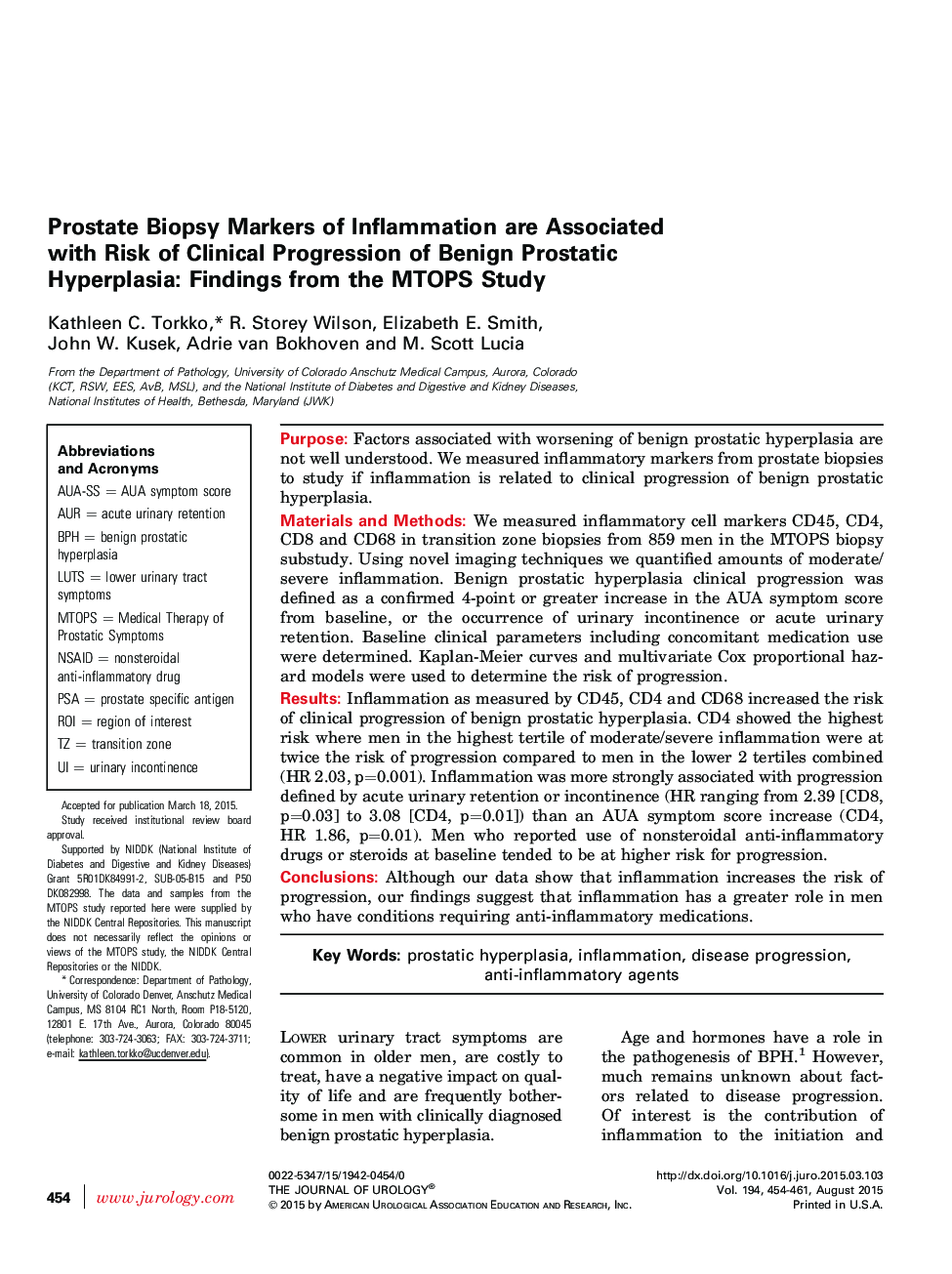| Article ID | Journal | Published Year | Pages | File Type |
|---|---|---|---|---|
| 3860772 | The Journal of Urology | 2015 | 8 Pages |
PurposeFactors associated with worsening of benign prostatic hyperplasia are not well understood. We measured inflammatory markers from prostate biopsies to study if inflammation is related to clinical progression of benign prostatic hyperplasia.Materials and MethodsWe measured inflammatory cell markers CD45, CD4, CD8 and CD68 in transition zone biopsies from 859 men in the MTOPS biopsy substudy. Using novel imaging techniques we quantified amounts of moderate/severe inflammation. Benign prostatic hyperplasia clinical progression was defined as a confirmed 4-point or greater increase in the AUA symptom score from baseline, or the occurrence of urinary incontinence or acute urinary retention. Baseline clinical parameters including concomitant medication use were determined. Kaplan-Meier curves and multivariate Cox proportional hazard models were used to determine the risk of progression.ResultsInflammation as measured by CD45, CD4 and CD68 increased the risk of clinical progression of benign prostatic hyperplasia. CD4 showed the highest risk where men in the highest tertile of moderate/severe inflammation were at twice the risk of progression compared to men in the lower 2 tertiles combined (HR 2.03, p=0.001). Inflammation was more strongly associated with progression defined by acute urinary retention or incontinence (HR ranging from 2.39 [CD8, p=0.03] to 3.08 [CD4, p=0.01]) than an AUA symptom score increase (CD4, HR 1.86, p=0.01). Men who reported use of nonsteroidal anti-inflammatory drugs or steroids at baseline tended to be at higher risk for progression.ConclusionsAlthough our data show that inflammation increases the risk of progression, our findings suggest that inflammation has a greater role in men who have conditions requiring anti-inflammatory medications.
